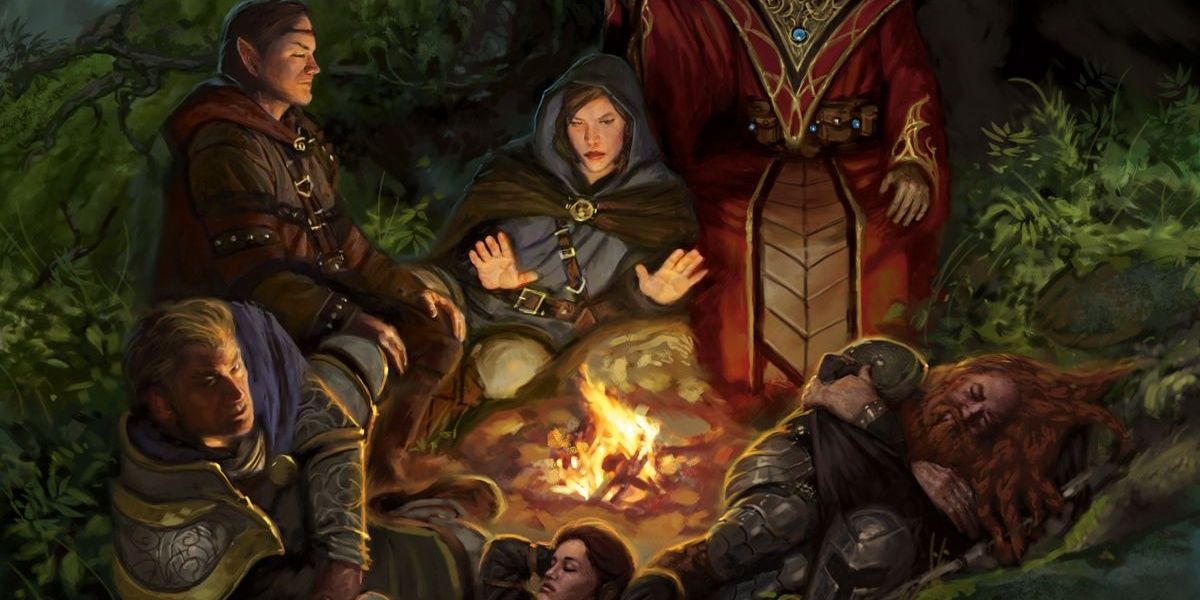Elves are one of the most easily recognizable races in Dungeons & Dragons and in fact across fantasy as a whole. Everyone has an image in their mind of the classic Tolkien-style elf. Even since the early days of D&D, elves have been popular and even more so with the advent of the Forgotten Realms setting.
In the Forgotten Realms, elves are an ancient culture that existed long before the rise of human empires or other major powers that exist in the world today. Many of the cities in the Lords’ Alliance are even built on or above the ruins of old elven cities, with the most famous example being Waterdeep, which sits above the remnants of Aelinthaldaar, once the capital of an elven empire. Tolkien’s influence is clear here, especially in the similarities with elves being an ancient civilization that has more or less fallen. However, there are a number of unique qualities in D&D elves that allow players to role-play elves in a way that makes them feel unique and stand apart from genre stereotypes. Here are some things that players can do to make their elves more interesting.
Connect to Elven History and Culture
There’s an extensive amount of lore and history available about elves and their cultures in the Forgotten Realms, including elves in other D&D worlds as well. One of the best resources for Forgotten Realms elves is Mordenkainen’s Tome of Foes, which has a whole section about what drove the various elven subraces apart in the first place. Another thing to consider is the in-world stereotypes about particular subraces. High Elves are often considered haughty, noble, and have a great tradition in magic and studies of the arcane. A player playing a High Elven character should keep this in mind and think about how it affects their day-to-day interactions with other characters and NPCs.
Keep Racial Bonuses in Mind for Role-Playing
One of the best tools a player has in their arsenal is actually the mechanics provided by their class and race. For elves, many racial bonuses are great indicators of how to role-play within that race. Wood Elves are a great example, with their Mask of the Wild and Fleet of Foot features being the best role-playing starting points. These two features indicate that a classic Wood Elf would be stealthy, perhaps inadvertently so, moving gracefully and taking longer strides than other characters.
Know the Challenges That Come With Role-Playing as a Planar Elf
The two main planar elf subraces, Eladrin and Shadar-kai, come from two planes of extremes. The Feywild, home of the Eladrin, is a place of chaotic magic and intense emotion. By contrast, The Shadowfell, the plane from which the Shadar-kai hail, is a place of deadened emotions, drained of most color and life. The elves from these planes, even though they may be in the Material Plane for the purposes of a Forgotten Realms campaign, will still bear the marks of their home planes. They may be affected differently by being in a plane that doesn’t play by those rules.
Eladrin may feel as though they have to restrain themselves and not act so impulsively, or they could even feel that the Material Plane itself is deadening their emotions compared to what they are used to. Their seasonal forms may be forced to tie to the season of the area they’re in, or they may feel disconnected because the Material Plane feels stagnant or immobile compared to the Feywild. By contrast, Shadar-kai, free of the oppressive influence of the Shadowfell, may find themselves in awe of the vibrancy and liveliness of the Material Plane, and they may even become more impulsive and emotional than they were in their home plane.
Consider Different Ways That Wanderlust Can Affect Elves
In the Forgotten Realms, elves are all plagued with a desire to explore and wander the world. This wanderlust is often what drives them to become adventurers in the first place, but this doesn’t have to be where this flavor stops. Players should consider how this affects their characters’ decision-making in terms of their goals and destinations — for example, whether they prefer visiting a remote ruin they haven’t seen yet over returning to a familiar town. This may also mean that they are restless and fidgety or find it hard to stand still for longer periods of time. They might pace around a room while the rest of the party makes plans.
Take the Long Lifetimes of Elves Into Account
While in the Forgotten Realms elves are not technically immortal, they can live for an extremely long time, upwards in some cases of 600 years. Because of this, they will likely have seen a number of historical events, perhaps even recalling firsthand something that the rest of their party considers ancient history. This can lend them an interesting regard (or in some cases disregard) for life. They may consider taking a life to be a last resort, as their perspective has led to them placing more value on life. Or, they may have a casual disregard for creatures with short lifespans, viewing their lives as less worthy.
Role-Play Against The Stereotypes of Elves
Bear in mind that the above sections describe the most classic examples of elf characters or in-world stereotypes concerning elves in the Forgotten Realms setting. An interesting thing that players can take advantage of is to play against these stereotypes. For example, players could create a Wood Elf who moves more clumsily than most of their kin, a drow happier above ground than below, a younger elf who’s had more experiences with major events than their ancient family member, or an elf who is more than happy to stay in their hometown instead of wandering the world. These are all traits that players can explore to make an elven character more unique, especially at a table where other elven characters are present.






